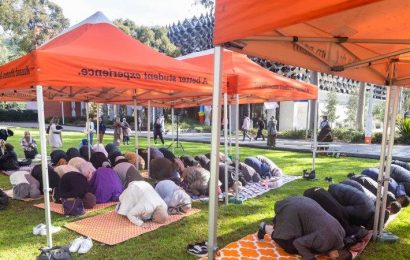Save articles for later
Add articles to your saved list and come back to them any time.
Key points
- The life expectancy for Australian women is now 85.4 years old, compared to 84.6 in 2017, for men it’s 81.3 years old, an increase from 80.5 in 2017.
- Only four per cent of men meet the vegetable guideline of at least five serves a day, while only 13 per cent of women are hitting the target, up from 6.67 per cent in 2017.
- Suicide remains the leading cause of death for men and women from the ages of 15 to 44, with men aged 45 to 74 most likely to die from coronary heart disease.
- Breast cancer is the biggest killer of women aged 46 to 64, while lung cancer claims most women in the 65 to 74 age bracket. Dementia is the number one cause of death for men and women over the age of 75.
- In 2021-22, 79 per cent of men visited a general practitioner, compared with 88 per cent of women.
Men are living longer and exercising more than five years ago, but eating fewer vegetables and are more obese, new national data reveals.
Released on Tuesday by the Australian Institute of Health and Wellness, the comparative report between men and women reveals an increase in life expectancy, with women now expected to reach an average age of 85.4 compared to 84.6 in 2017, while men can expect to live to 81.3 years, an increase from 80.5 years in 2017.
Only 4 per cent of men are hitting their target of five serves of vegetables each day, a new national report reveals.Credit: James Brickwood
When it comes to diet, there’s been no improvement for men, with only four per cent meeting the vegetable guideline of at least five serves a day, while only 13 per cent of women are hitting their leafy greens target, up from 6.67 per cent in 2017.
Men are getting fatter. In 2022, 75 per cent were carrying a little extra weight or registered as obese, up five per cent from five years ago, while 60 per cent of women were recorded as being overweight or obese, a number that remains stagnant.
Eight per cent of women and 12 per cent of men are still lighting up. Meanwhile, 27 per cent of men and 13 per cent of women are consuming more than 10 standard drinks of alcohol each week.
More men are getting the right amount of activity, up 15 per cent from 2017 to 65 per cent. Women are also moving more, with 59 per cent getting enough physical activity, up from 40 per cent in 2017.
Suicide remains the leading cause of death for men and women from the ages of 15 to 44, with men aged 45 to 74 most likely to die from coronary heart disease. Breast cancer is the biggest killer of women aged 46 to 64, while lung cancer claims most women in the 65 to 74 age bracket. Dementia is the number one cause of death for men and women over the age of 75.
Men and women in lower socioeconomic areas experienced twice the rate of potentially avoidable deaths in 2020 compared with higher socioeconomic areas, the data also reveals.
In 2021-22, 79 per cent of men visited a general practitioner, compared with 88 per cent of women. Men claimed an average of 3.3 GP services, and women an average of 4.1 GP services. Women were more proactive in seeking help for their mental health – 21 per cent saw a mental health professional, while only 12 per cent of males sought the same assistance.
The report also reveals that 2,559,400 or 25 per cent of the female population in 2021-22 said they experience mental health or behavioural conditions. Back problems were the most common chronic ailment for men in the same reporting period, with 1,884,500 or 19 per cent of the male population indicating they were sufferers of the condition.
Men and women are getting more physical activity than five years ago.Credit: Roger Stonehouse
Menzies Centre for Health Policy and Economics co-director Professor Andrew Wilson said mental health issues had alway been present but not well documented, while previously some injury deaths were not classified as suicide. The data now reflects a more accurate national picture.
“We’ve seen waves of increases of life expectancies. In the early 1900s, we saw one largely related to hygiene matters and also vaccines and the control of infectious diseases. We have progressed in the last 30 years with better management of cardiovascular disease,” Wilson said.
Wilson said in the 1960s more than 60 per cent of Australian men smoked cigarettes. That slow decline in those choosing to light up also correlated with greater life expectancy, as instances of stroke, heart disease and lung cancer shifted downwards.
“Life expectancy increases have started to slow down and that’s not unexpected. Things such as cancer are harder to deal with, there’s less room to move with the current cohort of people, people in my age group for instance already have these chronic diseases, but we should see that shift in time,” he told the Herald.
The Morning Edition newsletter is our guide to the day’s most important and interesting stories, analysis and insights. Sign up here.
Most Viewed in National
From our partners
Source: Read Full Article









